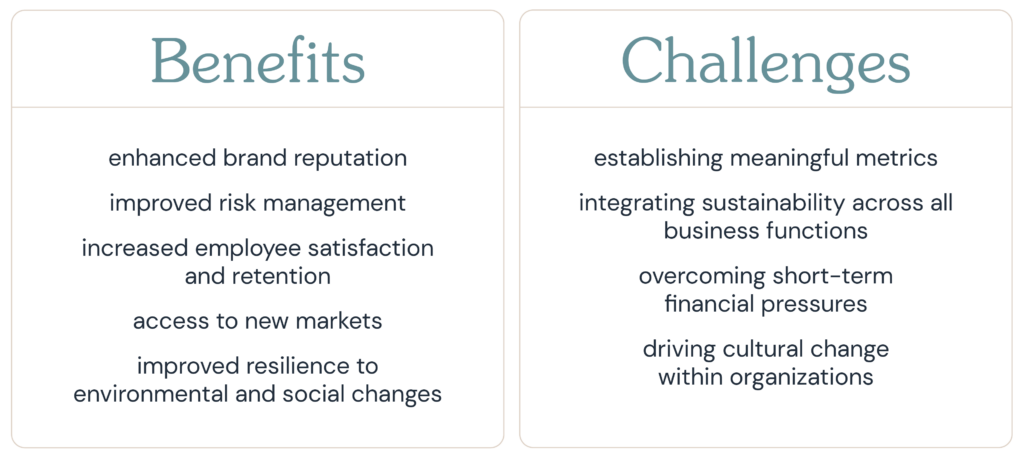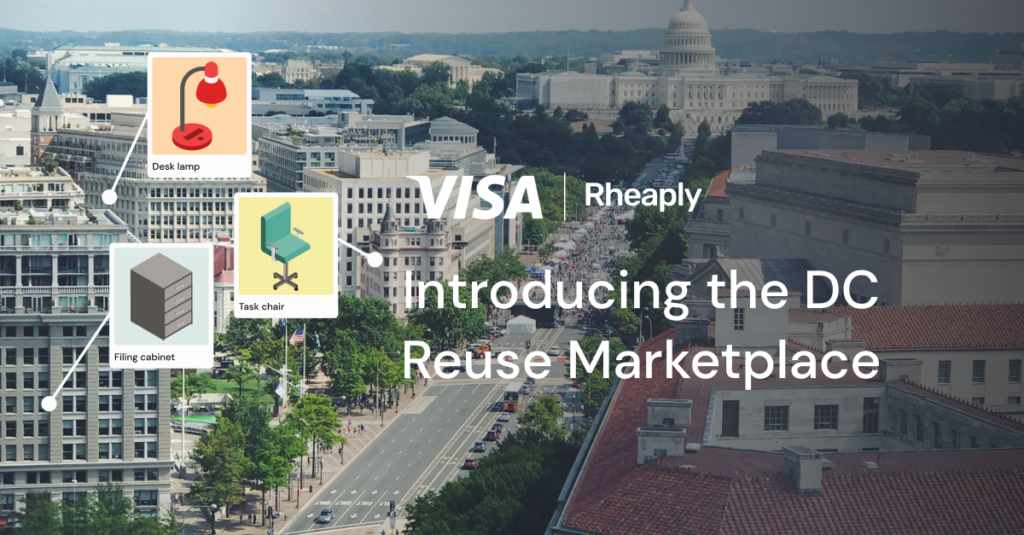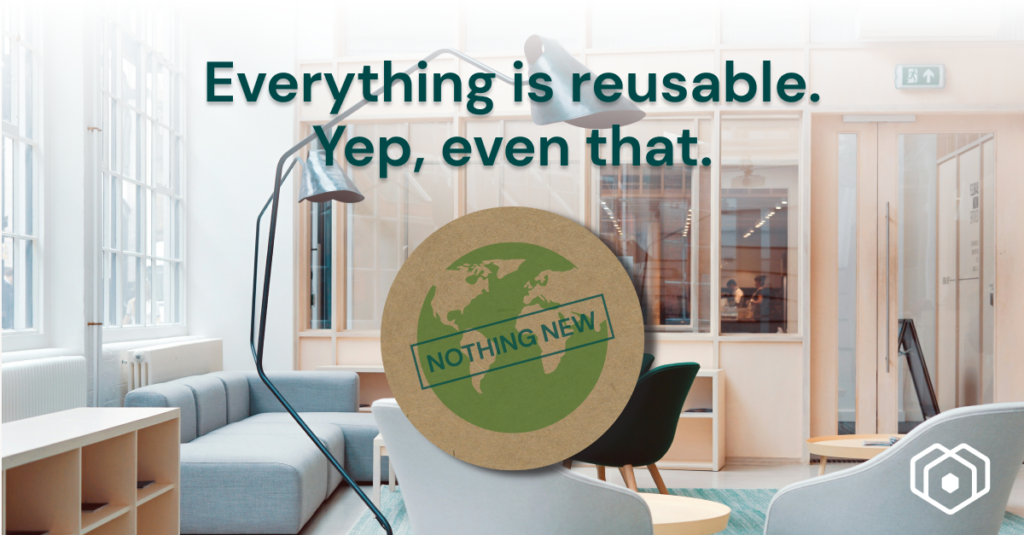The concept of the triple bottom line (TBL) has been around for the past 30 years, and remains a guiding framework as businesses increasingly focus on sustainability and responsible practices. In this resource guide, we will delve into the meaning of the triple bottom line and explore the three p’s that constitute its core principles. Whether you’re an entrepreneur, a student, or simply curious about sustainable business practices, this guide will provide valuable insights into the TBL framework.
What is a Triple Bottom Line?
The triple bottom line is a framework that expands the traditional focus on profit to include two additional pillars: people and planet. It encourages organizations to evaluate their impact not only through financial performance (profit) but also through social and environmental considerations. By taking into account the broader consequences of their actions, businesses can strive for long-term sustainability and contribute positively to society and the environment.
The pillars within this framework are recognized as “the three p’s” for the alliteration of People, Planet, and Profit. Each of the pillars of the triple bottom line maintain equal importance, breaking away from the traditional and regressive care towards profit only. Let’s break these pillars down even further and investigate how these impact and relate to the circular economy.
The three p's of the Triple Bottom Line
Profit (Economic Sustainability):
The first “p” of the triple bottom line refers to profit. It emphasizes the importance of economic viability and financial success for a business. Profitability ensures the organization’s longevity, enabling it to generate value for its shareholders, employees, and stakeholders. By adopting sustainable business practices and innovative strategies, companies can enhance their economic sustainability while aligning with the larger goals of the triple bottom line.
Under the triple bottom line framework, profit is important, but it isn’t everything. In the context of the circular economy, economic sustainability aligns with the notion of creating value and prosperity through resource efficiency and closed-loop systems. Businesses embracing the circular economy principles aim to design products and services that maximize resource utilization, minimize waste, and enable the circulation of materials and components back into the production cycle. This approach fosters cost savings, promotes innovative business models, and enhances long-term economic resilience.
People (Social Sustainability):
The second “p” represents people and highlights the significance of social sustainability. It encompasses fair labor practices, human rights, employee well-being, diversity and inclusion, community engagement, and other aspects related to human capital. Businesses that prioritize social sustainability foster strong relationships with their employees, customers, and communities, ultimately creating a positive social impact. It’s more important than ever for a business to recognize the people and community that it exists within.
The social dimension of the TBL intersects with the circular economy in various ways. The circular economy seeks to create a positive social impact by fostering job creation, improving working conditions, and supporting equitable access to resources and opportunities. By adopting circular practices, companies can contribute to the well-being of communities, promote local employment, and enhance social cohesion. Furthermore, the circular economy often encourages collaboration and partnerships among stakeholders, fostering knowledge-sharing and empowering individuals and communities.
Rheaply envisions entire cities where resources find their next, best use. These circular cities have to include all people, equitably and cover all sides of the market to see the ultimate success.
Planet (Environmental Sustainability):
The third “p” focuses on the planet, emphasizing the importance of environmental sustainability. This aspect encompasses environmental stewardship, resource conservation, waste reduction, carbon footprint reduction, and other practices that mitigate the often harmful and unnecessary ecological impact of business operations. By adopting environmentally friendly practices, companies can minimize their negative environmental footprint and contribute to the preservation and restoration of our planet in this time of crisis.
The circular economy is fundamentally rooted in environmental sustainability. It aims to minimize the depletion of natural resources, reduce pollution, and mitigate the negative impacts of linear production and consumption patterns. By prioritizing resource efficiency, recycling, remanufacturing, and waste reduction, the circular economy strives to conserve ecosystems, reduce greenhouse gas emissions, and promote the transition to a low-carbon economy. Implementing circular principles helps businesses minimize their environmental footprint and contribute to the conservation and restoration of the natural environment and ultimately, the whole planet.
Benefits and challenges of the Triple Bottom Line framework

Implementing the triple bottom line offers numerous benefits, including enhanced brand reputation, improved risk management, increased employee satisfaction and retention, access to new markets, and improved resilience to environmental and social changes.
However, it also comes with challenges, such as establishing meaningful metrics, integrating sustainability across all business functions, overcoming short-term financial pressures, and driving cultural change within organizations.
Each of these benefits and challenges must be taken into consideration when deciding why and how to adopt the framework into your company.
The history of Triple Bottom Line
The concept of the triple bottom line (TBL) was first introduced in 1994 by John Elkington, a British environmentalist and business strategist. Elkington coined the term in his book “Cannibals with Forks: The Triple Bottom Line of 21st Century Business,” where he proposed a new framework for evaluating business performance beyond financial measures.
The TBL emerged as a response to the limitations of traditional financial reporting, which focused solely on profit and shareholder value. Elkington argued that businesses should consider their impact on society and the environment alongside their financial performance. He emphasized the interconnectedness of these three dimensions and suggested that a more holistic approach was necessary to achieve sustainable and responsible business practices.
Since its introduction, the concept of the triple bottom line has gained recognition and adoption across various sectors and industries. It has become a widely accepted framework for evaluating and reporting on the social, environmental, and economic performance of organizations. The TBL has influenced corporate sustainability strategies, reporting standards, and the integration of sustainability into business decision-making processes.
Over time, the triple bottom line has evolved and expanded to incorporate additional considerations, such as governance, ethics, and transparency. Various organizations, including governments, non-profit organizations, and industry associations, have developed frameworks, guidelines, and reporting standards to help businesses assess and communicate their triple bottom line performance.
Today, the triple bottom line remains a prominent concept in sustainability discourse, guiding businesses towards a more comprehensive understanding of their impacts and responsibilities. It serves as a reminder that economic success should not come at the expense of social well-being or environmental degradation, and that businesses have a role to play in creating a more sustainable and equitable future.
However, Elkington today is concerned that the “triple bottom line” thinking has been reduced to a mere accounting tool. He encourages businesses to use it to think differently about their operations rather than using the framework to balance trade offs and ultimately still focusing on profit.
Driving sustainable change beyond the Triple Bottom Line
While the triple bottom line framework has been instrumental in shifting the business mindset towards sustainability, some argue that it may be time for a broader and more inclusive approach.
Critics suggest that the TBL oversimplifies complex sustainability challenges and fails to address crucial aspects such as governance, ethics, and systemic inequalities. However, this does not render the TBL framework totally obsolete. Rather, companies can leverage its principles to advance their overall sustainability efforts and drive positive change.
The enduring value of TBL lies in its ability to foster awareness and initiate conversations about the interconnectedness of economic, social, and environmental factors. It has catalyzed businesses to expand their focus beyond financial performance and consider a broader range of impacts. This shift in perspective has encouraged companies to integrate sustainability into their core strategies, embrace innovative practices, and be more accountable for their actions.
The TBL can act as a stepping stone towards embracing newer, more comprehensive frameworks that address the evolving challenges of the 21st century. As businesses increasingly recognize the need to go beyond the TBL, they can explore alternative models like the Sustainable Development Goals (SDGs) or other approaches that aim to restore and regenerate ecosystems.
Ultimately, the evolution of the TBL into a more holistic and inclusive framework reflects the ongoing journey towards sustainability. Companies that have already embraced the TBL can build upon their foundational efforts, adopting new frameworks and methodologies that align with their evolving understanding of sustainability. By using the TBL as a starting point and evolving their sustainability practices accordingly, companies can continue to advance their overall sustainability efforts, contributing to a more sustainable and equitable future for all.
By understanding the triple bottom line and implementing its principles, businesses can go beyond financial success and make a meaningful difference in the world. Embrace the triple bottom line today and become a catalyst for positive change.
Remember: Profit, People, and Planet – the three pillars that shape a sustainable future.



